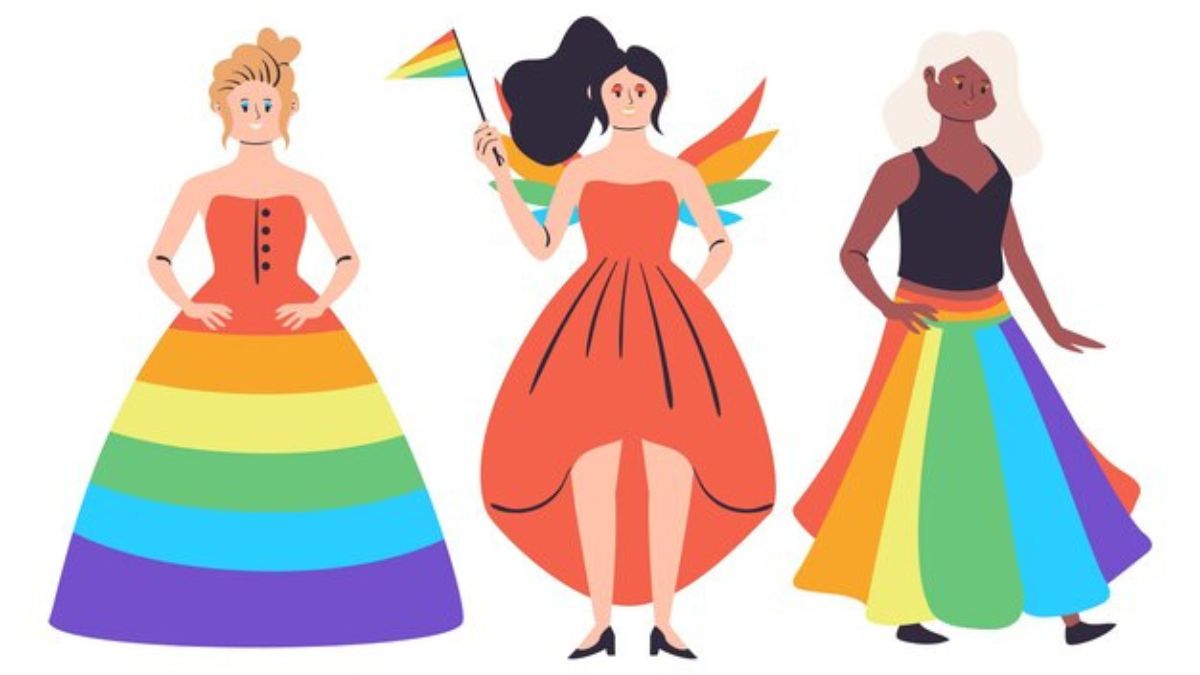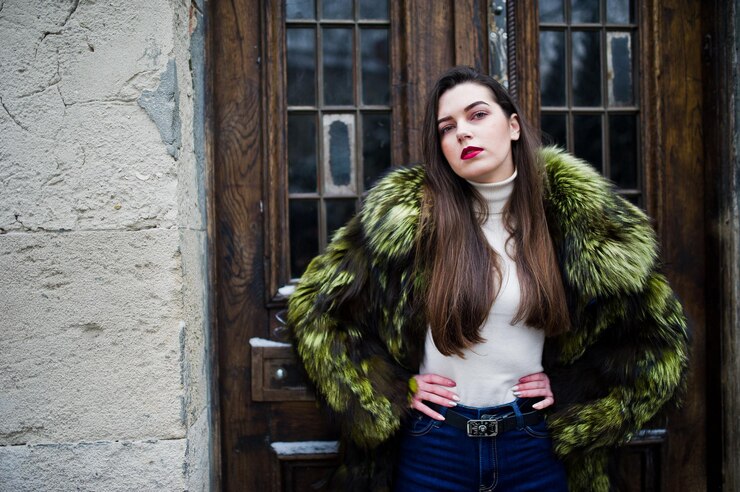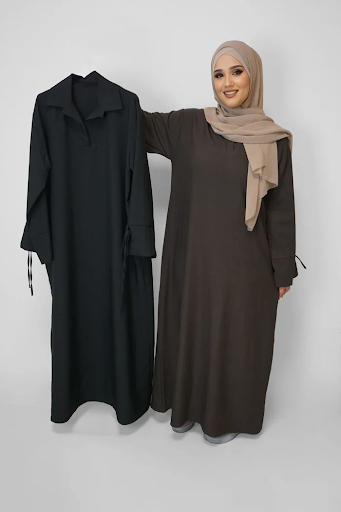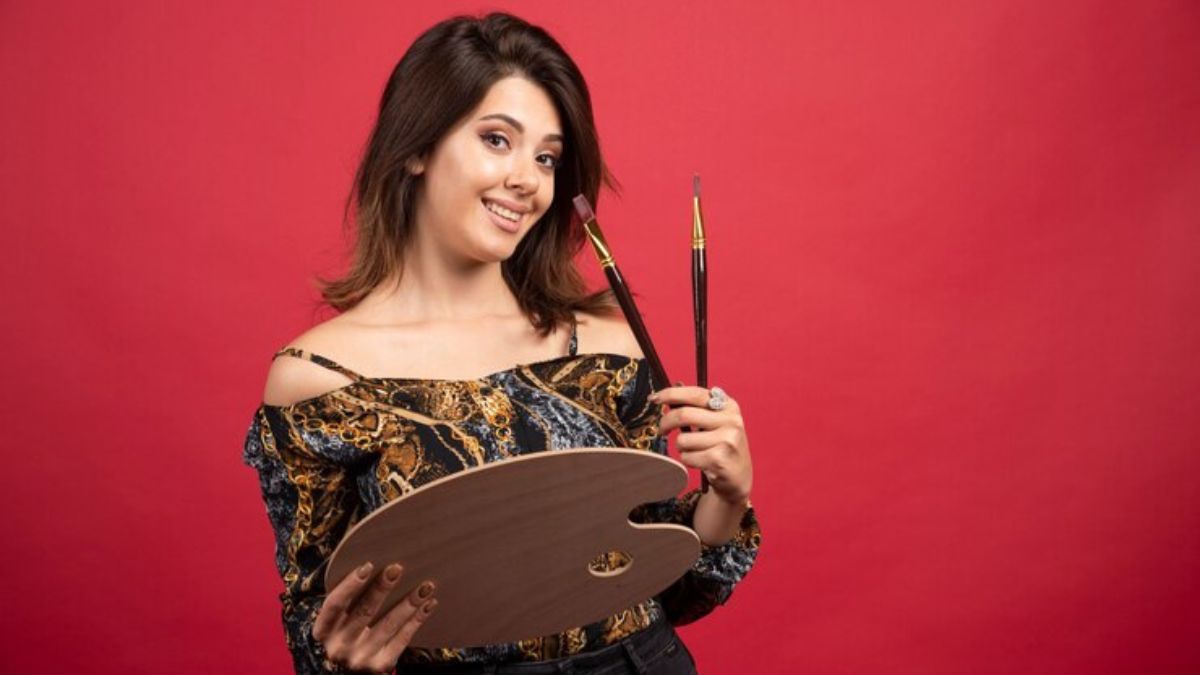Fashion
Tracing the Threads: The Fascinating origins dresses Through History

Origins Dresses have always held a special place in the tapestry of human history. From ancient civilizations to modern runways, these garments tell stories beyond mere fabric and thread. They reflect societal norms, cultural shifts, and personal expressions that transcend time. The origins of dresses reveal much about the people who wore them—what they valued, how they lived, and their aspirations.
As we embark on this journey through time, we’ll explore how dresses have evolved from simple pieces into symbols of status and identity. Each era brought its unique designs and styles that captured the essence of the times. Let’s unravel this captivating narrative together as we trace the threads connecting us to our past through fashion!
Ancient Dresses: From the Egyptians to the Romans
In ancient civilizations, Origins Dresses were not merely for adornment but served as symbols of status and culture. The Egyptians crafted garments from linen, designed to keep cool in the scorching sun. Their flowing sheath dresses often embraced vivid colors and intricate beading.
As we journey into Greece, tunics known as chitons emerged. They draped elegantly on the body, showcasing a simple yet refined aesthetic that highlighted natural beauty.
The Romans took inspiration from their predecessors but added their unique twist. Stolas became popular among Roman women; these long gowns featured an array of fabrics and embellishments. Drapery was key—how fabric fell transformed each dress into a work of art.
Throughout this era, accessories like sandals and jewelry completed the look, further elevating social standing. Each stitch told a story about identity and heritage within these vibrant cultures.
You may like also:Unveiling Worty34: The Journey of a Digital Pioneer
Medieval Dresses: From Simple Tunics to Elaborate Gowns
During the medieval era, Origins Dresses evolved significantly. Peasant women often wore simple tunics made from wool or linen. These garments were practical and allowed for ease of movement while working in fields.
As society progressed, so did fashion among nobility. Layers became essential, with undergarments like chemises worn beneath more elaborate gowns. Nobles flaunted their wealth with rich fabrics such as silk and brocade.
Colors played a vital role too. Bright hues indicated status; only the wealthy could afford vibrant dyes derived from rare sources. Embroidery adorned many pieces, showcasing intricate designs that told stories of lineage and power.
Sleeves transformed dramatically over time as well—growing longer or flaring out into extravagant shapes that mirrored the wearer’s social standing. The silhouette of these gowns began to reflect not just beauty but also practicality within courtly life.
Every detail mattered during this captivating period in dress history, influencing how identity was expressed through fabric and form.
Renaissance Dresses: A Time of Opulence and Luxury
The Renaissance era, spanning from the 14th to the 17th centuries, marked a dramatic shift in fashion. It was a time when creativity flourished and beauty took center stage. Dresses became canvases for artistic expression.
Fabrics like silk and velvet adorned noblewomen, often embellished with intricate embroidery and jewels. Colors were vibrant, signaling wealth and status. Deep reds, greens, and golds dominated wardrobes.
Silhouettes changed as well. The introduction of fitted bodices emphasized an hourglass figure while flowing skirts created an aura of elegance. Sleeves puffed out dramatically; they weren’t just functional but also showcased craftsmanship.
Accessories played a crucial role too—ornate headdresses completed the look of opulence that defined this period. Women reveled in their appearance as social gatherings turned into showcases for fashion prowess.
Renaissance dresses embodied not only style but also cultural ideals of beauty during a transformative age in history.
Victorian Era Dresses: Corsets, Bustles, and Hoop Skirts
The Victorian era, spanning from 1837 to 1901, was a time of dramatic transformation in fashion. Dresses became symbols of social status and femininity. Corsets emerged as essential undergarments, designed to shape the waist and enhance an hourglass figure.
These tightly laced garments dictated not just how women looked but also how they moved. Breathing was often secondary to beauty during this period.
Bustles made their grand entrance later in the century, adding volume at the back of dresses. This style created a striking silhouette that emphasized curves while allowing for movement.
Hoop skirts were another hallmark of Victorian fashion. They provided structure and fullness, giving gowns their iconic bell shape.
Rich fabrics adorned with lace and intricate embellishments further illustrated wealth and taste. The Victorian dress encapsulated both elegance and restriction—an intriguing dichotomy that defined women’s lives at the time.
1920s Flapper Dresses: Breaking Free from Tradition
The 1920s marked a pivotal shift in fashion and societal norms. Flapper dresses emerged as symbols of liberation for women eager to express their newfound independence. These knee-length garments celebrated freedom through movement, reflecting the spirit of the Jazz Age.
Characterized by loose silhouettes and dropped waistlines, flapper dresses embraced a more relaxed aesthetic. They often featured intricate beadwork and fringe, capturing the essence of dance halls filled with lively music. Women adorned themselves with cloche hats and long pearls, creating an iconic look that challenged traditional femininity.
Beyond aesthetics, flappers represented defiance against restrictive conventions. This era encouraged women to break away from corsets and rigid styles that defined previous generations. The flapper dress became a statement piece—a celebration of youth, rebellion, and modernity in an evolving world where boundaries were fading fast.
Evolution of Dress Styles in the 20th Century
The 20th century witnessed an extraordinary transformation in dress styles. The early years were characterized by a departure from restrictive garments. Women began to embrace comfort and freedom, leading to the rise of simpler silhouettes.
As decades unfolded, iconic styles emerged. The 1920s introduced flapper dresses that symbolized liberation and rebellion against tradition. Jazz music laid the backdrop for this bold fashion statement.
In contrast, the 1950s brought about full skirts, cinched waists, and glamorous elegance inspired by Hollywood icons. Fabrics became more experimental as designers pushed boundaries with vibrant patterns and textures.
The late 20th century saw punk influences challenging norms. Bold colors and unconventional designs reflected a culture eager for change. Streetwear also surged, blending casual attire with high-fashion sensibilities.
This era marked significant shifts not just in style but also in societal attitudes toward gender roles and identity through fashion choices.
Conclusion:
The journey through the history of dresses reveals more than just fashion trends. It uncovers stories, cultures, and societal shifts that have shaped our world.
Each era introduced distinctive styles reflecting values and ideals. From the flowing linens of ancient Egypt to the structured elegance of the Victorian age, dresses tell tales of their time.
As we move towards modern designs, the evolution continues. Today’s dresses embody freedom and individuality while still drawing inspiration from historical influences.
Understanding these origins enriches our appreciation for what we wear now. Every dress carries a piece of history worth exploring further.
FAQ’s:
What is the origin of dresses?
Dresses have been worn for centuries, evolving with each civilization. The earliest forms can be traced back to ancient cultures like Egypt and Mesopotamia.
How did dress styles change throughout history?
Dress styles transformed significantly over time due to various factors including social class, available materials, and cultural influences. For instance, medieval dresses were often practical while Renaissance gowns showcased wealth through intricate designs.
When did women start wearing pants instead of dresses?
The shift toward women wearing pants began in the late 19th century but gained momentum during World War I when practicality became crucial. By the 1920s, flapper styles challenged traditional norms further.
What influences today’s dress trends?
Today’s fashion draws inspiration from past decades combined with modern technology and social movements. Sustainability has become a key focus as consumers seek eco-friendly options that reflect their values.
Are there specific fabrics that define different eras in dress history?
Absolutely! Different periods favored specific textiles—linen was common in ancient times; silk dominated during the Renaissance; cotton became popular in Victorian clothing due to industrialization advancements.
By examining these questions about origins dresses throughout history, we gain insight into how our attire continues shaping identity across generations.
Fashion
Fauxmoi Explained: How AI is Shaping the Future of Style

Fashion is more than just clothing; it’s an expression of individuality and creativity. As we navigate the ever-evolving landscape of style, technology has stepped in to redefine how we experience fashion. Enter Fauxmoi—a game-changing concept that blends artificial intelligence with personal styling. Imagine having a virtual assistant at your fingertips, curating looks tailored specifically for you based on your preferences and body type.
In an industry known for its rapid changes, AI is emerging as a powerful ally, helping brands innovate and consumers find their unique style faster than ever before. From smart recommendations to sustainable practices, Fauxmoi embodies the intersection of technology and trendsetting. Join us as we explore how AI is shaping the future of fashion—one stylish outfit at a time!
The Rise of Virtual Styling Assistants
Virtual styling assistants are becoming a game-changer in the fashion world. They utilize advanced algorithms to analyze personal style preferences and body types, providing tailored outfit recommendations.
These AI-driven tools can curate looks based on current trends or user-uploaded photos. This personalization makes online shopping more accessible and enjoyable for everyone. No longer do we have to sift through endless racks of clothing; our virtual assistant does it for us.
Moreover, these assistants learn over time, adapting their suggestions as they gather more data about your likes and dislikes. They offer instant feedback, allowing users to experiment with bold styles without stepping out of their comfort zone.
Brands recognize this shift too. Companies are increasingly integrating these technologies into their platforms to enhance customer engagement and satisfaction, making virtual stylists an essential part of modern retail strategy.
AI-Powered Personalization in Online Shopping
AI-powered personalization is revolutionizing online shopping. It tailors experiences to individual preferences, enhancing user satisfaction.
With algorithms analyzing browsing history and purchase patterns, retailers can suggest items that resonate with each shopper’s unique style. This level of customization makes the process feel personal and engaging.
Shoppers no longer have to sift through endless options. Instead, they receive curated selections based on their tastes. This not only saves time but also creates a sense of connection between consumers and brands.
Additionally, AI systems learn from real-time data. They adapt recommendations as trends shift or as consumers evolve in their style choices. The result? A dynamic shopping experience that feels intuitive rather than transactional.
This technology empowers customers to discover new styles confidently while ensuring they find what truly suits them without feeling overwhelmed by choices. It’s a game changer for the fashion industry and for how we express ourselves through clothing.
Creating Sustainable Fashion with AI
Sustainable fashion has become a pressing concern in today’s world. The fashion industry is one of the largest polluters, but AI offers innovative solutions.
Algorithm-driven design tools help brands minimize waste. By predicting trends and preferences, designers can create items that resonate with consumers without overproducing.
Additionally, AI optimizes supply chains. It analyzes data to streamline processes, reducing carbon footprints significantly. With precise inventory management, excess stock becomes less of an issue.
AI also enhances recycling efforts through smart sorting technologies. This allows for better material recovery from discarded clothing, promoting a circular economy.
Brands are beginning to leverage these insights to cultivate eco-conscious practices. As more companies adopt AI strategies, sustainable choices will likely reshape the landscape of fashion for years to come.
The Impact of AI on Traditional Retail
Traditional retail is experiencing a seismic shift thanks to AI technologies. Brick-and-mortar stores are now leveraging data analytics to understand customer preferences better. This means tailored promotions and personalized shopping experiences.
AI-driven inventory management helps retailers optimize stock levels, reducing overages and shortages. Predictive algorithms analyze trends, allowing businesses to respond swiftly to market demands.
Moreover, virtual fitting rooms powered by AI enhance the in-store experience. Shoppers can visualize how products look without physically trying them on.
Retailers also utilize chatbots for customer service, ensuring efficiency while maintaining engagement. These bots provide instant responses and support, streamlining operations significantly.
As traditional retailers adapt these innovations, they must balance technology with human interaction. The future of retail hinges on this delicate blend of automation and personal touch.
Ethical Concerns Surrounding AI in Fashion
As AI technology advances in the fashion industry, ethical concerns are emerging. One major issue is data privacy. Many virtual styling assistants collect personal information to offer tailored recommendations. This raises questions about how securely this data is stored and who has access to it.
Then there’s the concern of job displacement. Traditional roles within the fashion sector may be threatened as AI takes on tasks like merchandising and design automation. The human touch that brings creativity and uniqueness could be lost.
Additionally, there’s a risk of perpetuating bias through algorithms trained on historical data that may not represent diverse body types or styles effectively. This can result in exclusionary practices rather than fostering inclusivity.
Sustainability also comes into play with fast-fashion brands using AI for rapid production cycles, potentially leading to environmental degradation if not managed responsibly. Balancing innovation with ethical considerations remains crucial as Fauxmoi continues to shape style trends.
Predictions for the Future of Fauxmoi and AI in Style
The future of Fauxmoi and AI in style is bright and full of potential. Imagine a world where your virtual stylist knows not just your size, but also your mood on any given day.
With advancements in machine learning, these assistants could adapt to changing preferences seamlessly. Expect tailored recommendations that feel personal rather than algorithm-driven.
Sustainability will play an integral role too. Brands leveraging AI can predict trends while minimizing waste, leading to more eco-friendly collections.
Virtual try-ons might become the norm as augmented reality improves. Shoppers could see how clothes fit before making a purchase—eliminating guesswork entirely.
Moreover, social media integration may enhance fashion discovery through curated feeds based on individual tastes. The lines between online and offline shopping will blur even further, creating an immersive experience for every consumer.
As technology evolves, so too will our relationship with fashion—making it more intuitive and personalized than ever before.
Conclusion
The fashion landscape is evolving rapidly, driven by the power of AI technologies like Fauxmoi. This shift opens new doors for creativity and personalization.
As consumers demand more tailored experiences, brands are responding with innovative solutions that blend style with technology. The future promises smarter shopping journeys enhanced by virtual assistants.
Sustainability will also take center stage as AI helps streamline production processes and reduce waste.
With every advancement in this realm, ethical considerations rise to the forefront, urging us to think critically about how we embrace these innovations.
Fashion lovers can look forward to a vibrant tapestry of trends shaped by algorithms and human artistry alike. Embracing Fauxmoi means stepping into a world where style knows no bounds.
FAQS
What is Fauxmoi?
Fauxmoi refers to the intersection of faux fashion and technology, emphasizing how artificial intelligence is transforming personal styling. It encompasses virtual assistants and tools designed to enhance your shopping experience.
How does AI impact online shopping?
AI enhances online shopping by offering personalized recommendations based on user preferences. This means shoppers can discover styles tailored specifically for them, enhancing convenience and satisfaction.
Are there any benefits of using AI for sustainable fashion?
Absolutely! AI helps brands analyze trends and consumer behavior, allowing for more efficient production processes. By reducing waste in manufacturing, it plays a crucial role in promoting sustainability within the industry.
Will traditional retail stores become obsolete due to AI advancements?
While some may fear obsolescence, traditional retailers are adapting by integrating technology into their operations. Offering unique experiences alongside tech-driven insights allows them to remain competitive while meeting modern consumer demands.
What ethical concerns arise from using AI in fashion?
There are several ethical considerations surrounding data privacy and algorithmic bias. It’s essential for companies to address these issues transparently while maintaining trust with consumers.
What does the future hold for Fauxmoi?
The future seems bright as both technology and fashion continue evolving hand-in-hand. With ongoing innovations, we can expect even smarter solutions that redefine our understanding of style at every level—personalization will only grow stronger!
If you have more inquiries or specific interests regarding Fauxmoi or its implications within the world of fashion powered by artificial intelligence, feel free to reach out or explore further!
Fashion
Modest Winter Fashion: Abayas and Hijabs to Keep You Warm and Stylish

When the temperature drops, modest fashion doesn’t have to take a backseat. In fact, winter is the perfect time to showcase the beauty of abayas and hijabs. These timeless wardrobe staples offer a mix of elegance, warmth, and practicality. Whether you’re dressing for casual outings or more formal events, abayas and hijabs have you covered—literally! At Anissa Hijab Fashion, we specialize in winter-friendly modest wear designed to keep you cozy and stylish all season long. Here’s why abayas and hijabs should be your go-to for winter fashion.
The Year-Round Charm of Abayas
Abayas are iconic in modest fashion, known for their flowing silhouettes and versatile designs. But in winter, they become even more essential. Here’s what makes abayas a must-have during the colder months:
Warm Fabrics That Work for Winter
Winter abayas are made from thicker fabrics like wool, cashmere, or heavyweight cotton. These materials trap warmth while maintaining that signature sleek look. Say goodbye to shivering and hello to comfort!
Perfect for Layering
One of the best things about abayas is how easy they are to layer. Throw on a thermal top, cardigan, or even a coat underneath, and you’ll stay warm without adding bulk to your outfit.
Stylish Designs for Every Taste
Whether you prefer classic black abayas or bold embroidered styles, there’s something for every taste. Winter collections often feature rich, earthy tones like burgundy, navy, and deep green—perfect for adding a seasonal twist to your wardrobe.
Winter-Ready Hijabs: Style Meets Warmth
Hijabs do more than complete your look—they also help keep you warm. The key is choosing the right fabrics and colors for the season. Here’s how winter hijabs can upgrade your cold-weather outfits:
Cozy, Warm Fabrics
Look for hijabs made from jersey, pashmina, or wool blends. These materials offer extra warmth and insulation, so you stay comfortable even on freezing days.
Seasonal Colors and Patterns
Winter fashion is all about deep, rich colors. Think emerald green, maroon, charcoal grey, and even classic plaid prints. These hues add depth and elegance to any outfit.
Stay-Put Styling
Windy days can wreak havoc on your hijab, but not if you pick the right one. Winter-friendly hijabs are designed to have better grip, meaning fewer touch-ups throughout the day.
How to Nail the Winter Look with Abayas and Hijabs
Want to look polished while staying warm? Here are some simple style tips for winter-ready modest fashion:
- Invest in High-Quality Outerwear: Pair your abaya with a chic long coat or cape. Neutrals like beige, black, and grey work well with most abayas and hijabs.
- Accessorize for Warmth and Style: Gloves, scarves, and boots aren’t just functional—they’re fashionable, too. Try matching them with your abaya and hijab for a coordinated, pulled-together look.
- Play with Layers: Layer cardigans or knitwear under your abaya for extra warmth. Mix textures to create a sophisticated winter vibe.
Abayas for Every Occasion
With the right design, a winter abaya can work for just about any event on your calendar. Here’s how to pick the right abaya for different occasions:
- Everyday Outings: For running errands or meeting friends, choose a relaxed-fit abaya in cozy, warm fabric.
- Workwear: Stay polished with a structured abaya in neutral shades like black, grey, or navy. It’s sleek, professional, and warm enough for the office.
- Special Events: Embroidered or embellished abayas add glamour to formal events, evening gatherings, or celebrations. Rich fabrics and intricate designs make a statement.
Why Choose Anissa Hijab Fashion?
At Anissa Hijab Fashion, we make modest winter fashion simple, stylish, and affordable. Here’s what sets us apart:
- Premium Fabrics: Our winter abayas are crafted from high-quality materials that keep you warm and cozy, while our hijabs offer soft, breathable comfort.
- Exclusive Styles: Our collection includes everything from classic abayas to more modern, on-trend designs. Whether you want understated or eye-catching, we’ve got it.
- Affordable Luxury: You don’t have to spend a fortune to look elegant. Our abayas and hijabs offer premium quality at budget-friendly prices.
- Top-Notch Customer Service: Not sure which abaya to pick? We’re here to help you choose the perfect pieces for your winter wardrobe.
Wrap It Up (With an Abaya and Hijab, of Course!)
This winter, there’s no need to sacrifice warmth for style. Abayas and hijabs let you stay cozy, comfortable, and chic all at once. With options for every occasion—whether it’s work, casual outings, or special events—your wardrobe will always feel fresh and fashionable.
Looking to “abaya kaufen” (buy abayas) or explore stunning “abaya kleider” (abaya dresses)? Anissa Hijab Fashion has everything you need to create the perfect winter look. Shop our collection today and make this winter your most stylish one yet!
Author Bio:
Kamil Riaz Kara is a Karachi-Based SEO Expert and a passionate vlogger. He has been actively involved in the field of digital marketing since 2015. For more information, feel free to connect with him on LinkedIn.
Fashion
Vanna Bardeau: Merging Traditional Techniques with Modern Artistry

Vanna Bardeau is a name that resonates within the art community, captivating audiences with her unique blend of traditional craftsmanship and modern flair. Her work tells stories that bridge generations, inviting us to explore the rich heritage of artistic techniques while embracing contemporary themes. Each piece she creates reflects not just skill but also a profound respect for artistry’s roots. As you delve into Vanna’s world, you’ll discover how she skillfully intertwines past and present, creating visually stunning narratives that challenge our perceptions of art itself. Join us as we uncover the layers behind her creativity and the inspirations driving this remarkable artist forward.
The Influence of Traditional Techniques on Bardeau’s Work
Vanna Bardeau’s art deeply resonates with the echoes of tradition. She draws inspiration from age-old techniques, breathing new life into them.
Her mastery of these methods showcases a profound respect for history. From classical painting styles to intricate textile work, every piece reflects her dedication. These traditional approaches provide a solid foundation upon which she builds her contemporary vision.
Bardeau often employs hand-weaving and natural dyeing processes. This connection to craftsmanship infuses her work with authenticity and depth. The tactile nature of these techniques invites viewers to engage on multiple levels.
Incorporating elements like calligraphy or woodblock printing further enhances her narrative style. Each stroke is deliberate, revealing stories that transcend time.
Through this blend of old and new, Vanna creates a dialogue between eras—challenging perceptions while honoring the past in each artwork she produces.
Blending Tradition with Modern Artistry: Examples of Bardeau’s Pieces
Vanna Bardeau’s artistry is a striking fusion of age-old techniques and contemporary aesthetics. One standout piece, “Resonance,” showcases intricate hand-stitching alongside digital prints. This combination creates a layered texture that invites viewers to explore its depths.
Another remarkable work, titled “Eclipse,” employs traditional woodblock printing methods but incorporates modern color palettes. The vivid hues breathe new life into ancient practices, challenging perceptions of what art can be.
Bardeau also experiments with mixed media in her series “Echoes.” Here, she melds ceramics with photography, creating an immersive experience that engages multiple senses. Each piece tells a story steeped in history while embracing the future.
Through these examples, Bardeau redefines boundaries and encourages dialogue between past and present. Her inventive approach opens up exciting possibilities for both artists and audiences alike.
The Inspiration Behind Bardeau’s Work
Vanna Bardeau draws inspiration from the world around her. Nature often serves as a muse, with its vibrant colors and intricate patterns influencing her creations. Each brushstroke reflects a deep appreciation for organic forms.
Cultural heritage plays a vital role too. Bardeau’s work is infused with techniques passed down through generations, honoring traditions while infusing them with contemporary flair. This fusion creates a dialogue between past and present.
Emotional experiences shape her artistry as well. Personal stories, struggles, and triumphs weave into each piece, inviting viewers to connect on deeper levels. Her art becomes more than just visuals; it tells a story that resonates universally.
Travel has also expanded her horizons. Exploring diverse cultures fuels her creativity and broadens perspectives, allowing fresh ideas to emerge in unexpected ways. In this blend of influences lies the heart of Vanna Bardeau’s captivating work.
Challenges and Rewards of Merging Traditional and Modern Styles
Merging traditional and modern styles presents unique challenges for artists like Vanna Bardeau. It requires a deep understanding of historical techniques while simultaneously embracing contemporary trends. This delicate balance can be daunting.
Finding the right fusion often involves trial and error. Some pieces may not resonate as intended, leading to creative frustration. Artists must navigate this complexity without losing their authentic voice.
Yet, the rewards are profound. Creating work that bridges generations invites rich dialogue among viewers, fostering appreciation for both art forms. Each successful blend evokes nostalgia while sparking curiosity about innovation.
Artists gain new perspectives by experimenting with diverse methods, enriching their creative palette. The journey transforms them personally and artistically, pushing boundaries in ways they never imagined possible. Melding these styles ultimately redefines artistic norms and inspires others to explore unconventional paths in their own artistry.
Vanna Bardeau’s Impact on the Art World
Vanna Bardeau has carved a distinctive niche in the art world, bridging generations through her innovative approach. By infusing traditional techniques with contemporary themes, she challenges conventional boundaries.
Her work resonates across diverse audiences. Collectors appreciate not just the aesthetic but also the rich narrative embedded within each piece. Art enthusiasts find themselves drawn to her unique stories that transcend time and culture.
Bardeau’s influence extends beyond her artwork; it inspires fellow artists to explore their roots while embracing modernity. Workshops and exhibitions featuring her pieces often foster discussions about evolving artistic expressions.
Critics recognize her ability to provoke thought and emotion, making viewers reconsider what art can represent today. Through collaborations with galleries worldwide, she continues to elevate traditional craftsmanship into new realms of expression—a testament to her lasting impact on both emerging and established artists alike.
Celebrating the Beauty of Tradition and Innovation in Art
Art is a dialogue between the past and present. It thrives on the interplay of tradition and innovation. Vanna Bardeau exemplifies this beautifully.
Her work invites viewers to appreciate age-old techniques while embracing contemporary themes. Each piece tells a story that resonates with both history buffs and modern art lovers alike.
The intricate craftsmanship honors time-tested methods, yet her creative flair pushes boundaries. This fusion creates a rich tapestry of colors, textures, and meanings that captivates the eye.
Celebrating this blend encourages artists to explore their roots while daring to innovate. It inspires new generations to find beauty in both heritage and modern perspectives, proving that art can evolve without losing its essence.
In every brushstroke or sculpted form lies an invitation: cherish what was while dreaming of what could be.
Conclusion
Vanna Bardeau’s artistry is a vibrant tapestry of history and innovation. Her ability to weave traditional techniques into contemporary designs sets her apart in the art world.
Each piece she creates invites viewers to explore the dialogue between past and present. This unique blend not only captivates but also inspires others in their artistic journeys.
Bardeau’s work serves as a reminder that tradition can coexist with modernity, enriching our visual experiences. The beauty lies in this fusion, sparking curiosity and admiration alike.
As audiences engage with her art, they embark on a journey through time—one where every brushstroke tells a story. Vanna Bardeau continues to forge paths for future generations of artists eager to explore similar themes.
FAQS
What materials does Vanna Bardeau use in her artwork?
Vanna utilizes a variety of materials, including natural pigments, textiles, and mixed media elements. This diversity helps create depth in her pieces.
Where can I view Vanna Bardeau’s artwork?
Her works have been featured in galleries across the country and online platforms dedicated to showcasing emerging artists.
Is there a particular style associated with Vanna Bardeau?
While she incorporates various styles into her work, many recognize her for blending traditional craftsmanship with bold modern aesthetics.
What themes does she explore in her art?
Bardeau often explores themes of identity, culture, and heritage. Her background plays an essential role in shaping these narratives within each piece.
How can I learn more about upcoming exhibitions featuring Vanna Bardeau?
Following her on social media or subscribing to art newsletters will keep you updated on future exhibitions and projects related to her art.
Whether you’re an artist seeking inspiration or simply an admirer of unique artistry, exploring the work of Vanna Bardeau promises enriching experiences that celebrate both tradition and innovation.
-

 Entertainment12 months ago
Entertainment12 months agoUnveiling the World of HDToday
-

 Entertainment12 months ago
Entertainment12 months agoWWE Raw S31E19: A Rollercoaster of Emotions
-

 Topic12 months ago
Topic12 months agoHüriyer: Unveiling the Essence of Human Freedom
-

 Health12 months ago
Health12 months agoExploring the Benefits of wellhealthorganic Home Remedies
-

 Business12 months ago
Business12 months agoUnlocking Opportunities with GovDeals – Liquidity Services Marketplace
-

 Technology12 months ago
Technology12 months agoUnlocking the Mystery of QXEFV
-

 Health12 months ago
Health12 months agoIlluminate Your Scans: Unveiling the Magic of Luminous Scans in Modern Imaging
-

 Health7 months ago
Health7 months agoCape Concierge Physical Therapy: Revolutionizing Physical Therapy in Sandwich, MA
